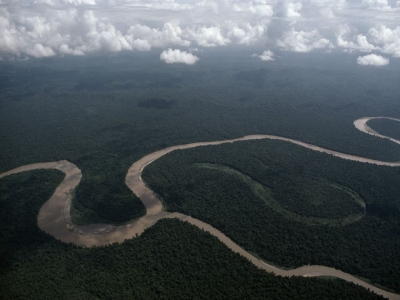
Oxbow lakes usually form in flat low-lying plains close to where the river empties into another body of water. Meanders that form oxbow lakes are characterised by two sets of curves: one curving away from the straight path of the river and one curving back, On the inside of the loop, the river travels more slowly leading to deposition of silt, while on the outside edges, the river flows faster leading to the erosion of the banks and thereby the meander becoming wider at these points. Over time, the loops widen until their necks vanish altogether and cutting themselves off from the river’s current and thus forming the oxbow lake. As water does not flow in or out of them, oxbow lakes are stillwater lakes. They eventually become swamps or bogs, and often dry up as their water evaporates.
Oxford lakes can support a range of wildlife. Submerged or floating aquatic vegetation, phytoplanktons, algae and various types of fish are some of the species found in oxbow lakes. In Amazon, the most common wildlife you will see in an oxbow lake are giant river otters and the fish they feed on. Many birds can also be seen visiting oxbow lakes.
Picture Credit : Google




